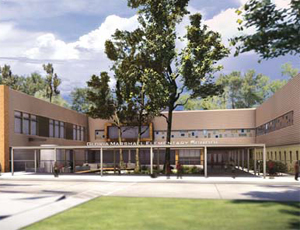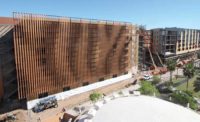Sustainable building improves performance by both students and teachers, which is a huge selling point for school boards and school districts. A book full of tests have shown that people perform better when they work in areas with more windows than walls and where high-quality indoor air powers better work – in offices as well as classrooms.

That is what sustainable building encourages and that is what gets the attention of school boards and school districts, says Terry Hoyle, principal of SHW Group architects in Dallas.
Some school district officials have difficulty translating the performance studies, but they have no problem understanding data on measured financial savings, he says.
“Tell them you can reduce energy costs by 30% or 40% - they can get their heads around that,” Hoyle says.
Green schools are a relatively new concept, but they have developed from a design tenet that has been around since the 1950s.
Plenty of daylight can light schoolrooms without adding heat or creating glare if designers and builders make good use of windows, overhangs and skylights. And the air quality in classrooms can be improved with natural ventilation if windows and vents are designed and located for it.
That’s according to William Caudill, author of Toward Better School Design; founder of Caudill Rowlett Scott architecture firm in Houston; researcher on school design at Texas A&M University; and an innovator in school planning, design and construction.
Ideas like his show up today in schools that flood classrooms with plenty of natural light and where improved air quality improves both student and teacher performance and attendance.
Studies show that improved classroom lighting translates into higher attendance rates for students, and more children in classrooms means more dollars in state and federal funding, says Jody Henry, project manager for SHW Group in Houston.
School districts don’t have unlimited funds, and the average school in the U.S. is 42 years old, so more of them are looking at lifetime operating costs as they...


Post a comment to this article
Report Abusive Comment